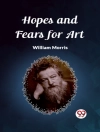Queer Others in Victorian Gothic: Transgressing Monstrosity explores the intersections of Gothic, cultural, gender, queer, socio-economic and postcolonial theories in nineteenth-century British representations of sexuality, gender, class and race. From mid-century authors like Wilkie Collins and Elizabeth Gaskell to fin-de-siecle writers such as J. Sheridan Le Fanu, Florence Marryat and Vernon Lee, this study examines the ways that these Victorian writers utilized gothic horror as a proverbial ‘safe space’ in which to grapple with taboo social and cultural issues. This work simultaneously explores our current assumptions about a Victorian culture that was monolithic in its disdain for those who were ‘other’.
Tabela de Conteúdo
Chapter One: Introduction Chapter Two: The Spinster and the Hijra: How Queers Save Heterosexual Marriage in Wilkie Collins’s The Woman in White and The Moonstone Chapter Three: Escaping Heteronormativity: Queer Family Structures in Elizabeth Gaskell’s Lois the Witch and ‘The Grey Woman’ Chapter Four: Disintegrating Binaries, Disintegrating Bodies: Queer Imperial Transmogrifications in H. Rider Haggard’s She Chapter Five: ”One Does Things Abroad That One Would Not Dream Of Doing In England”: Miscegenation and Queer Female Vampirism in J. Sheridan Le Fanu’s Carmilla and Florence Marryat’s The Blood of the Vampire Chapter Six: In Defense of Her Queer Community: Vernon Lee’s Coded Decadent Gothic












